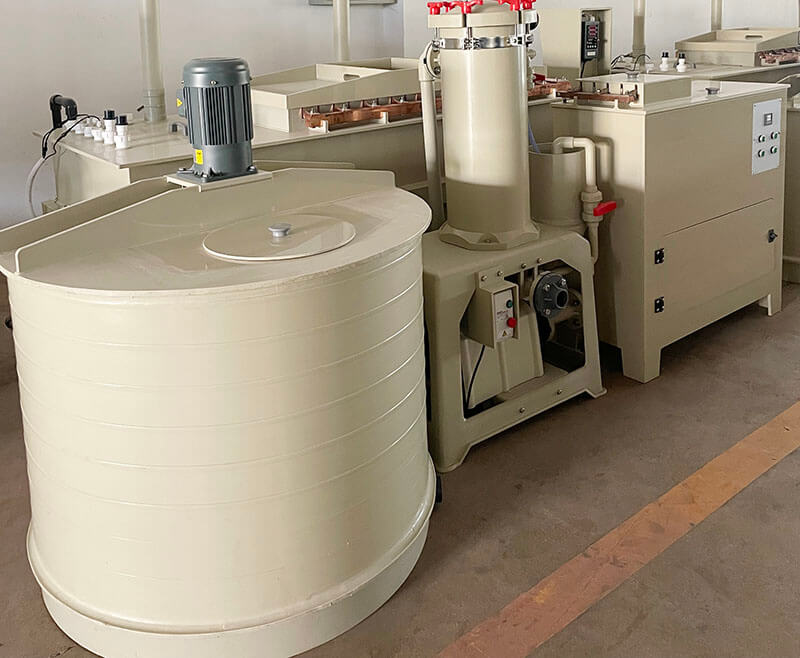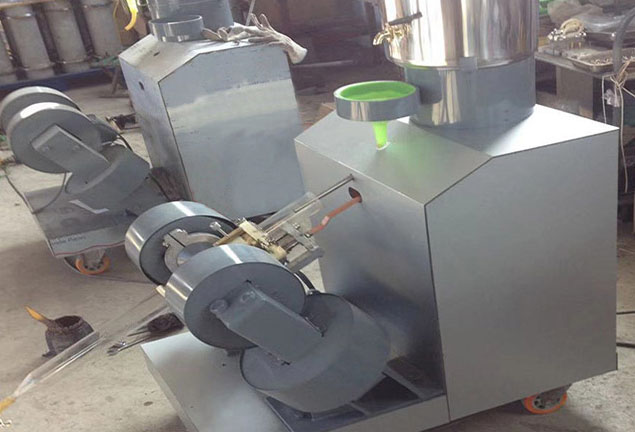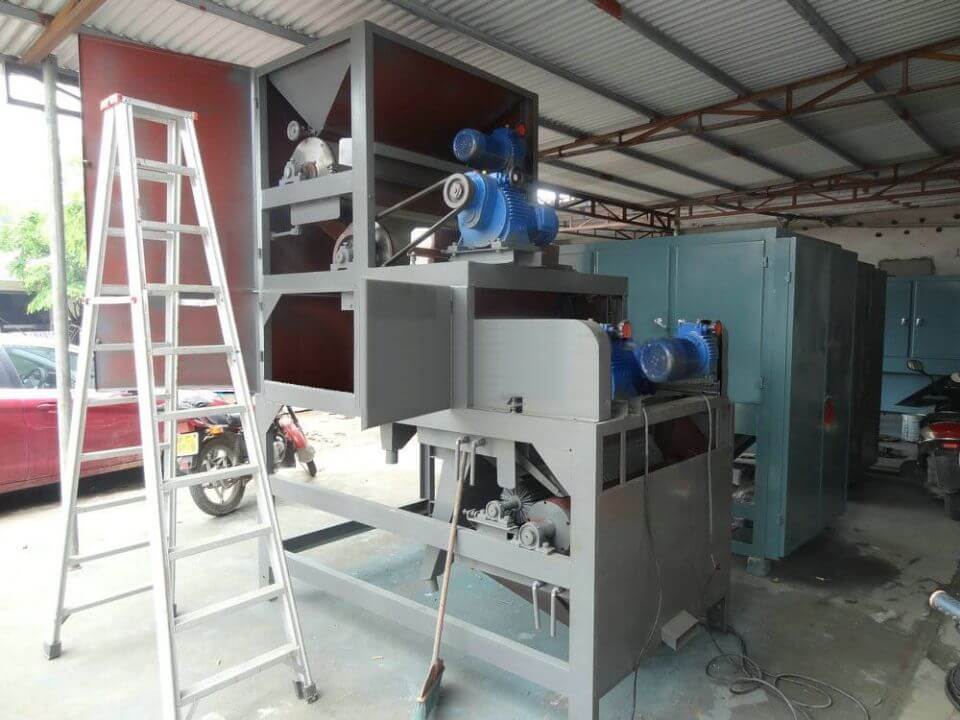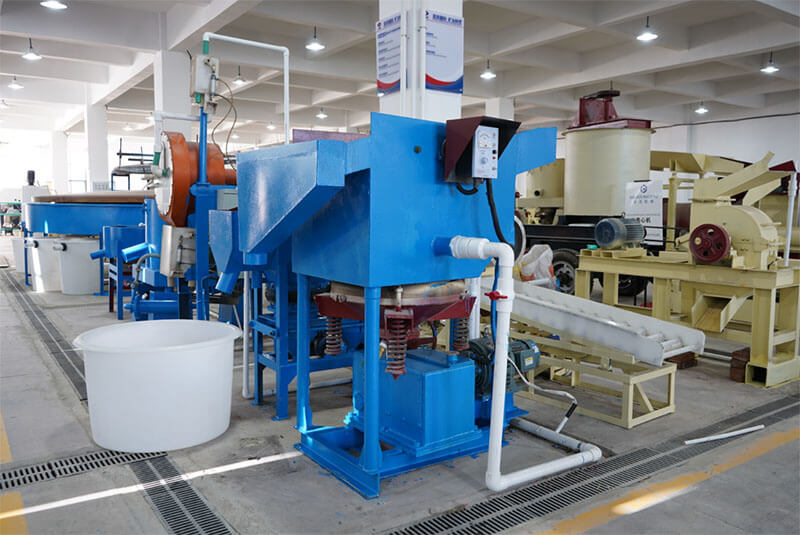Tantalum-niobium ore is a rare metal mineral widely used in electronics, aerospace, metallurgy, and other fields. With the development of technology, the demand for tantalum-niobium ore continues to increase, making the research and development of beneficiation technology particularly important. In beneficiation experiments, the appropriate laboratory equipment is essential to achieving high efficiency and recovery rates. This article will provide a detailed introduction to the laboratory equipment required for tantalum-niobium ore beneficiation. It includes laboratory crushing equipment, laboratory grinding equipment, laboratory screening equipment, laboratory beneficiation equipment, and laboratory concentration equipment.
1. Laboratory Crushing Equipment
Crushing is the first step in the beneficiation process, aimed at breaking large ore blocks into smaller pieces suitable for subsequent processing. The choice of laboratory crushing equipment directly impacts the efficiency of subsequent grinding and beneficiation.
Laboratory Jaw Crusher
Principle: The jaw crusher crushes ore by the relative motion between two jaw plates.
Features:
- It has a simple structure, easy to operate, and handle larger ore blocks, which is suitable for primary crushing.
- Applicable to various ores for laboratory testing, especially suitable for hard ores.
Laboratory Hammer Crusher
Principle: The lab hammer crusher breaks ore by impacting it with high-speed rotating hammers.
Features:
- Suitable for crushing wet and brittle ores.
- Its compact structure, easy maintenance, and low energy consumption make it suitable for small-scale laboratory use.
Laboratory Double Roll Crusher
Principle: The double-roll crusher crushes ore by compressing it between two rotating rolls.
Features:
- Suitable for the crushing of medium-hard ores, capable of providing uniform particle sizes.
- Simple structure, easy to operate, suitable for laboratory and small-scale production, and can adjust the discharge particle size to meet different experimental requirements.
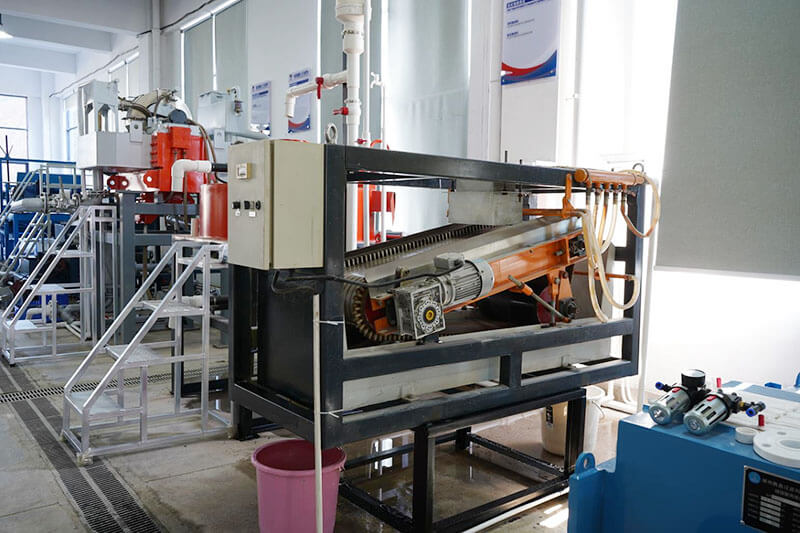
2. Laboratory Grinding Equipment
Grinding is a further crushing of the crushed ore to the desired fineness. The choice and operation of grinding equipment will affect the recovery rate and grade of minerals.
Laboratory Ball Mill
Principle: The lab ball mill grinds ore by using grinding media (such as steel balls) within a rotating cylinder. The ore is crushed through the impact and friction of the balls.
Features:
Suitable for both wet and dry grinding, capable of processing large amounts of ore, with good grinding effects.
This machine has flexible operation, can adjust grinding time and media type according to experimental needs. It is suitable for processing fine-grained ores.
Laboratory Rod Mill
Principle: The rod mill uses long rods as grinding media, grinding ore through the friction and impact between the rods and the ore in a rotating cylinder.
Features:
Suitable for grinding plastic ores, effectively reducing the over-grinding of the ore.
Suitable for processing some special ores.
It is essential to choose appropriate grinding equipment and adjust grinding parameters, as these factors directly influence the degree of mineral liberation and the effectiveness of subsequent beneficiation.
3.Laboratory Screening Equipment
The screening will classify the ground ore according to particle size to facilitate subsequent beneficiation. The choice of laboratory screening equipment should consider the particle size distribution of the ore and the requirements of subsequent processing.
Laboratory Vibrating Screen
Principle: The lab vibrating screen separates ore of different particle sizes through vibration.
Features:
- High screening efficiency, suitable for large-scale production, easy to clean and maintain.
- Capable of quickly and effectively classifying ore by particle size, suitable for subsequent beneficiation processes.
Laboratory Classifier
- Spiral Classifier: It utilizes the sedimentation principle of pulp for classification. This machine is suitable for processing fine-grained pulp, effectively separating minerals of different sizes.
- Shaking Table: The shaking table utilizes gravity and water flow to classify minerals. It is suitable for fine-grained ores in small-scale laboratory tests.
The selection of screening equipment should be based on the characteristics of the ore and specific experimental requirements to ensure efficient separation of valuable minerals and waste rock, laying a solid foundation for subsequent beneficiation.
4. Laboratory Beneficiation Equipment
Beneficiation is the critical step of separating valuable minerals from ores, and the choice of laboratory beneficiation equipment directly affects the recovery rate and grade of minerals.
Laboratory Magnetic Separator
Principle: The magnetic separator separates minerals in a magnetic field. It is suitable for separating magnetic minerals in tantalum-niobium ore.
Types:
- Dry Magnetic Separator: Suitable for magnetic separation of dry ores, effectively separating magnetic minerals.
- Wet Magnetic Separator: It is suitable for wet processing, effectively separating minerals, and effective in treating fine-grained ores.
Laboratory Flotation Machine
Principle: The lab flotation machine separates valuable minerals by adding flotation reagents, allowing them to float on bubbles for separation.
Features:
- Suitable for separating complex ores, effectively improving the recovery rate of valuable minerals.
- The choice of reagents and operating conditions during flotation is critical to the separation efficiency.
Laboratory Gravity Separation Equipment
- Shaking Table: Separates minerals based on density differences using gravity, suitable for processing fine-grained ores.
- Spiral Chute: It uses pulp flow and gravity for separation. The spiral chute is suitable for fine-grained ores and separate valuable minerals.
The choice of beneficiation equipment should comprehensively consider the characteristics of the ore and the required recovery rates and grades to achieve efficient separation.
5. Laboratory Concentration Equipment
Gravity concentration will further concentrate the beneficiation pulp to improve the mineral grade. The choice of laboratory concentration equipment is crucial for enhancing the grade and recovery rate.
Laboratory Spiral Concentrator
Principle: The spiral concentrator concentrates valuable minerals in the pulp through the action of spiral blades, forming concentrated ore.
Features:
Strong processing capacity, suitable for large-scale production, effectively improving the concentration rate.
Laboratory Centrifugal Concentrator
Principle: The centrifugal concentrator uses centrifugal force to separate minerals from waste rock, effectively improving concentration efficiency.
Features:
- Suitable for processing fine-grained ores, capable of achieving high mineral recovery rates, especially effective for complex ores.
- The concentration equipment in the beneficiation process is vital; reasonable selection and configuration can significantly improve the recovery efficiency and grade of minerals.
Conclusion
The beneficiation experiment of tantalum-niobium ore is a complex and systematic process involving the coordinated operation of various equipment. Laboratory crushing, grinding, screening, beneficiation equipment, and concentration equipment complement each other, forming a complete beneficiation workflow. It effectively enhances the recovery rate and grade, laying a solid foundation for subsequent smelting and applications.
JXSC lab mineral processing equipment manufacturer has more than 38 years of experience in mining processing. We provide various lab mining equipment including gravity-separating equipment for processing minerals such as gold, tin, tungsten, lead, zinc, tantalum, niobium, iron, manganese, silver, titanium-iron, etc. Lab machines include laboratory jaw crusher, hammer crusher, roller crusher, grinding equipment, lab gravity separator, screening, washing equipment, etc. Welcome to consult!

